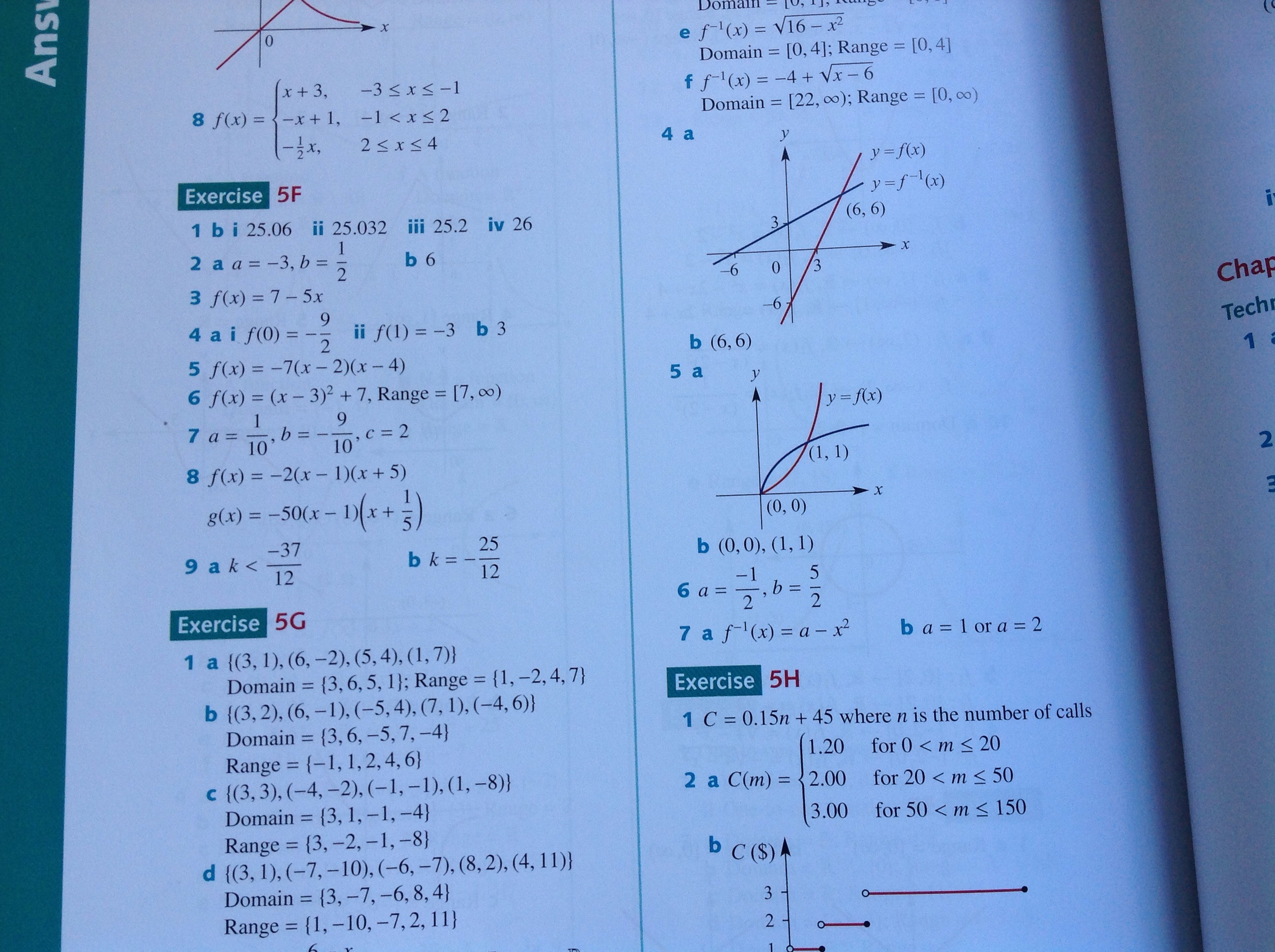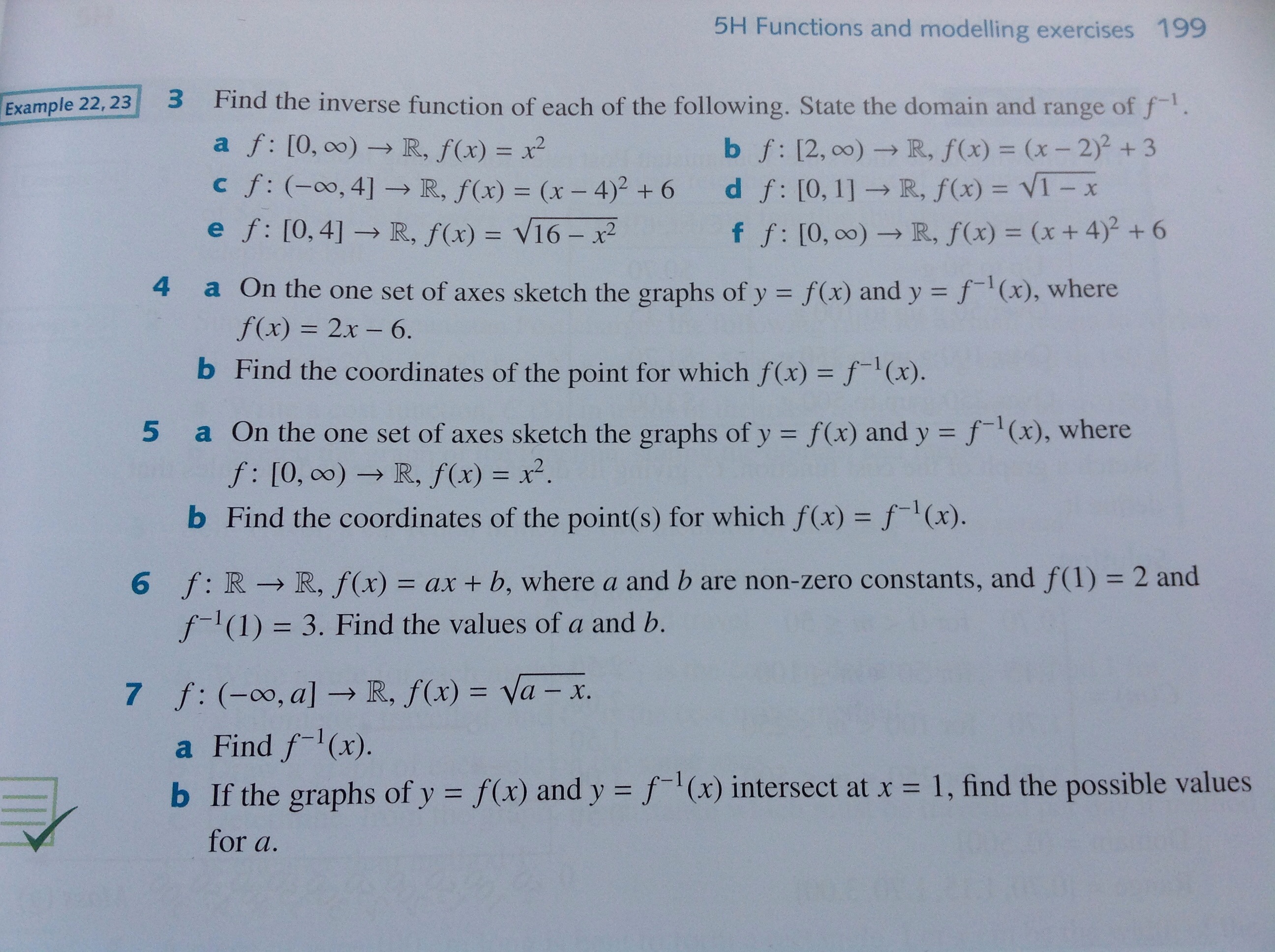How to find the coordinates at the point which f(x) = f^-1 (x)?


Can someone please explain to me how to do question 5b and 7b?
And is the x coordinate always equal to the y coordinate at f(x)=f^-1 (x) ?
Thank you very much!


Can someone please explain to me how to do question 5b and 7b?
And is the x coordinate always equal to the y coordinate at
Thank you very much!
2 Answers
Refer to explanation emphasized text
Explanation:
Let's take this one step at a time:
5a)
When they are sketched they look like the graph in the pic above.
5b) To find the coordinates where they cross, you simple look at the graph and estimate their coordinates (This is a common trick question) which are (1,1), where they cross on the graph, and (0,0), where they both cross at the start on the graph. On an exam paper, this might be worth like 1-3 marks. If there were proper equations for
7b) You make the two equations equal to each other and substitute 1 in place of
Square it to get rid of the square root:
Rearrange to make it equal to zero.
Then do quadratic formula to find the answers to a
5b)
7b)
Explanation:
5b)
Note that
if
7b)
Note that
Now if
now solving
with the solutions
Now if


